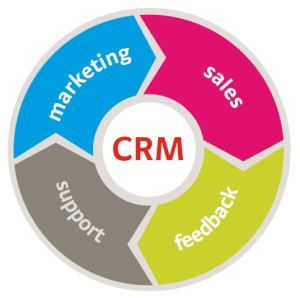Prospecting is a crucial step for any company seeking to develop its customer base and increase sales. Sending prospecting emails and using emailing solutions such as email campaigns has become essential to achieve this goal. Web marketing, which includes online advertising, search engine optimization and landing page creation, is also important to get prospects’ attention and encourage them to interact with your business. Email frequency is also a key consideration, as it is important to maintain a balance between the need to maintain regular contact with prospects and the risk of overwhelming them with too much information. Prospecting is essential for the development of a business and emailing solutions, email campaigns, web marketing, landing page creation and sending frequency are all important elements to succeed in this business.
What is the purpose of a prospecting email?
A prospecting email is a very useful tool for companies looking to expand their customer base. It is used to reach prospects who do not yet know the company and to convince them to become customers. Prospecting emails are therefore used to promote a product or a service, but also to establish a first contact with prospects.
Prospecting emails can be used as part of an emailing or mailing strategy, which consists of sending mass messages to a list of targeted recipients. For these emails to be effective, it is important to personalize them according to the characteristics of each recipient. Personalization increases the open and response rate of emails, because it shows that the company really cares about the prospect.
The open rate is a key indicator of the effectiveness of prospecting emails. It measures the percentage of recipients who have opened the e-mail. To increase this rate, it is important to use catchy subjects, to propose an interesting offer or content and to adapt the message to the expectations and needs of the prospects.
Email marketing is an essential tool for companies looking to expand their customer base. It allows you to establish a first contact with prospects, to promote a product or a service, and to increase the chances of converting these prospects into customers. Personalization and open rate are key elements to consider in order to maximize the effectiveness of prospecting emails.

How can you personalize your prospecting emails to optimize open and response rates?
When it comes toemail prospecting, personalization is one of the keys to increasing open and response rates. Recipients are often overwhelmed by promotional emails, so it’s important to stand out by offering personalized content tailored to their needs.
Segment your list of recipients
The first step to personalize your emails is to segment your list of recipients. This means that you divide your list into groups based on criteria such as profession, industry or buying behavior. This segmentation allows you to personalize messages according to the interests and needs of each group.
Marketing automation
Another way to personalize your emails is to use automation. Marketing automation allows you to send personalized messages at strategic times based on the behavior of the recipients. For example, if a recipient has clicked on a link in your newsletter, you can automate the sending of a follow-up message to provide a personalized offer.
Use a recognizable name and email address
The sender is also an important element to take into account when personalizing your emails. Recipients tend to open emails from a real person rather than a company more easily. So remember to use a recognizable name and email address to build trust with your recipients.
A regular and well-targeted B2B email campaign
Finally, avoid spam by proposing quality content and avoiding too frequent email campaigns. A regular and well-targeted B2B newsletter or email campaign can be effective, but it is important not to flood recipients with unnecessary emails.
Personalization is essential to optimize the open and response rates of your prospecting emails. Segmenting your lists, using automation, personalizing the sender and proposing quality content are effective ways to stand out from the competition and capture the attention of your recipients.

Mistakes to avoid in a prospecting email
Email prospecting is an effective digital marketing tool for growing a business. However, it is important not to make any mistakes that could affect the success of the campaign. Here are some mistakes to avoid in a prospecting email.
First of all, it is essential to properly target the recipients. An effective email campaignstarts with a good segmentation of the customer database thanks to a CRM. This makes it possible to personalize messages according to the interests and needs of each group of recipients. Sending a non-personalized message to an uninterested audience can lead to a high churn rate. You should check the quality of the newsletters or emails sent. Spelling errors, incorrect links or inappropriate images can damage a company’s credibility. The message must also be responsive for an optimal user experience on all devices.
The click-through rate is an important indicator of the success of a prospecting campaign. If the click-through rate is low, it may be due to content that is not relevant to the target audience. It is therefore important to propose interesting and relevant content for the target audience. Routing is also an important consideration. It is important to choose the right service provider to ensure the deliverability of emails and avoid them being classified as spam.
Finally, it is essential to measure the return on investment of the campaign. Companies need to be able to measure the effectiveness of their campaign by tracking open and click-through rates, unsubscribe rates, conversion rates and ROI. There are many mistakes to avoid in a prospecting email. It is essential to target the recipients, to propose relevant content, to check the quality of the email, to choose the right routing provider and to measure the return on investment to maximize the chances of success of the campaign.